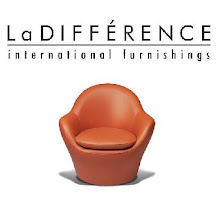
In the furniture world, for those of us trying to be 'more green', nearly every furniture category and every furniture surface can be redesigned in a more environmentally friendly way. Wood is sourced from sustainable forests. Lacquers, paints, and surface treatments release no VOC's (volatile organic compounds) into the atmosphere. And vendors reuse, repurpose, and recycle wherever possible. And consumers respond.
All of that is great.
Except for one rather important omission...
the SEAT.
FOAM - a fossil-fuel dependent substance - has been the primary resource for the seating (and bedding) industry for decades. Why? Because consumers (particularly American) find it comfortable. Foam is resilient, can be cut and carved into shapes, and lasts a long time, particularly when it is very dense. But, it is still a fossil-fuel reliant substance.
What's an environmentally savvy consumer to do? Well, some go back to down filled, but that creates a whole different set of problems (plucking feathers from birds and all that). Down seating also gets very slouchy (some say sloppy) looking over time, and down is much much firmer than most foam seating... which means that most manufacturers who work with down still combine it with - you guessed - foam, for that softer, cushier, longer-lasting feel. Back to square one.
In the last few centuries, before 'foam' was so prevalent, cushions were stuffed with anything from straw to horse hair. Ever sat on an antique sofa with horsehair cushions? Rather, um, firm.
Now there is an alternative:
BiOH polyols.
Created & developed by Cargill,
BiOH polyols offer retailers and consumers an option to seating that relies 100% on fossil fuels.
Founded in 1865, Cargill* is a privately held company that employs 160,000 people in 67 countries. An international producer and marketer of food, agricultural, financial and industrial products & services, Cargill is dedicated to helping their customers through collaboration, innovative, research & development. It is through these efforts that
BiOH polyols came to be.
"
BiOH polyols are a soy-based ingredient for flexible foam used in upholstered furniture and bedding, carpet backing, and automotive seats. Traditional foam and carpet backing ingredients are derived from petroleum-based products.
BiOH products are made from a renewable resource - soybean oil."
BiOH polyols can be used to replace about 20% of the 67% of polyphenols used to make upholstered foam cushioning, without losing the durability, strength, and comfort that American consumers desire in their seating. (To learn more about the research & development of the product and the science behind it, visit the
BiOH website.)
When LaDiff learned more about
BiOH polyols, we were impressed. This would tie into our efforts to educate our consumers about environmentally friendly home furnishings options. We were even more pleased to learn we were already carrying furniture made with
BiOH seat cushioning, when we saw this video blog on
BiOH's website about one of our FAVORITE upholstery & leather suppliers:
American Leather.
We jumped on board the
BiOH bandwagon and started talking about it on Twitter with
BiOH horn-tooter (and marketing manager) Jessica Koster and mistress of all
BiOH social-media, Leslie Carothers. They gave us the full story and explained that the goal is to get consumers -
HEY, THAT'S YOU! - to know enough about the benefits of
BiOH that they ask for it by name. We figure that once consumers -
YOOHOO, calling YOU again! - realize that there IS a choice in upholstered seating that includes renewable resources, asking for it by name would be a natural 'next step'.
Think of it like the Intel Pentium chip. Go back about 10-12 years, when computers just started getting 'fast' (to be able to interact with the quickly evolving world of the internet). Intel had this great product, but it couldn't be sold alone. It was always put inside of another product: the pc you chose. (Okay Mac people, just bear with me for a minute). So Intel started marketing this chip... telling people to ASK FOR IT when they bought a computer. Pentium became a household word for computer-savvy consumers. They sought out machine builders who incorporated the Pentium chips into their builds. Success!
Why can't
BiOH become like the Pentium chip?
And, unlike some decisions that are 'good for you',
BiOH is not 'tasteless' in the sense of design. Some of the country's top furniture designers and manufacturers are using BiOH... which takes us back to
American Leather. We're still working on getting American Leather to hang tag all of their product to shout out "hey! this has
BiOH!" In the meantime, we'll do it ourselves... "Hey, you guys! Check out the
very cool furniture at LaDiff that includes BiOH polyols! It's better for the environment... and better for all of us too."
psst... to you LaDiff upholstery suppliers who are NOT using BiOH foam yet, you might want to look into it for your company too!*Information on Cargill found at http://www.bioh.com/. *Thank you to Leslie Carothers (@tkpleslie) & Jessica Koster (@BiOHforALLJK) for providing us with information and education to write this blog.



